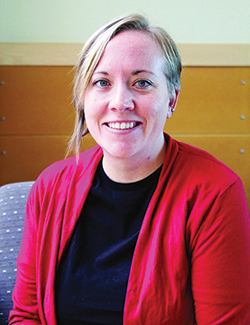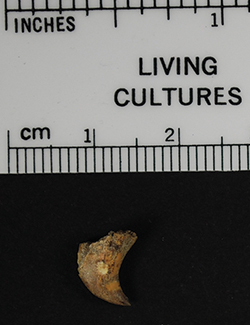By Max Showalter, WSG Science Communications Fellow
Northwestern rivers like the Columbia and Snake were once brimming with salmon, but decades of overfishing and environmental change have dramatically reduced or wiped out populations. Today, the only remnants of these populations are scattered patches of ancient bones. Ancient bones that could share secrets of the past — if only someone could make them talk.
“We know that salmon in the Columbia River have experienced massive losses in population size,” Johnson explains. “We assumed this meant there were also losses in genetic diversity. However, we had never been able to test or quantify it. This project did that.”

Researcher Bobbi Johnson. Photo by Washington State University.
By using novel techniques, Johnson and colleagues compared genetic sequences of modern salmon with DNA taken from 7,000-year-old samples. Their results show that genetic diversity among Chinook salmon in Northwestern river basins has dramatically decreased. The study, now published in the journal PLOS ONE, reveals the impact that centuries of environmental change has had — with real consequences for modern fish stocks.
Genetic diversity is a measure of the characteristics in a population’s genetic makeup. Like tools on a tool belt, genetic characteristics may serve specialized functions that work best in certain contexts. Many traits in a population allow the fish to succeed in changing environments. “All environments change, so diversity is a way to hedge your bets against the inevitable,” Johnson says. When a population declines, the genetic diversity decreases and the ability of the population to adapt to change decreases also.
Comparing the genetic diversity from before and after the population decline requires DNA from both periods. While finding DNA from modern salmon is easy, it’s not so straightforward for bygone fish. To find the ancient DNA, or aDNA for short, Johnson and her colleagues dug through an ancient trash dump, known as a midden, looking for salmon bones that had been discarded by indigenous people. The team worked with government, academic and tribal researchers to acquire 346 fish vertebrae for DNA analysis to compare with 366 modern samples.
The scientific challenges didn’t end there given that DNA can degrade a lot over 7,000 years. “Things like moisture, heat and the sun are really hard on genetic material,” Johnson explains. To get around this, the group developed a novel method called rescue PCR (short for polymerase chain reaction). In traditional genetic sequencing, PCR increases DNA concentrations by taking short snippets and then growing them. But with degraded DNA, there might not be enough genetic material to do this through conventional means. Rescue PCR increases the concentrations of the reagents needed to grow the DNA, enhancing the chances of success.

The tooth of a Chinook salmon.
Photo by Bobbi Johnson.
As it turned out, the rescue PCR technique worked — and yielded surprising results. The group found that nearly two-thirds of the genetic diversity from the ancient samples was lost in today’s Columbia River Basin stocks. This is more than the losses found in other river basins in Washington, Oregon and Idaho. Given that the rivers are very similar environments, Johnson says this result was unexpected.
The team also asked whether patterns of diversity loss might leave clues about historical climate events or more contemporary dam placements, but no strong correlations were found. This was in part due to lack of available samples from relevant time periods.
In the future, the team hopes to conduct similar experiments in other regions. “Right now, one area we’re looking at is California. Looking at salmon in a different area with a different history can help us understand this study better,” Johnson says.
While the team’s work highlights the genetic differences between ancient and modern salmon stocks, Johnson and colleagues emphasize their results don’t indicate the fish’s genetic suitability to its current environment, as previous research suggests today’s salmon populations are highly adapted to their home rivers. So make no bones about it — in the Pacific Northwest today, the Chinook salmon is still king.